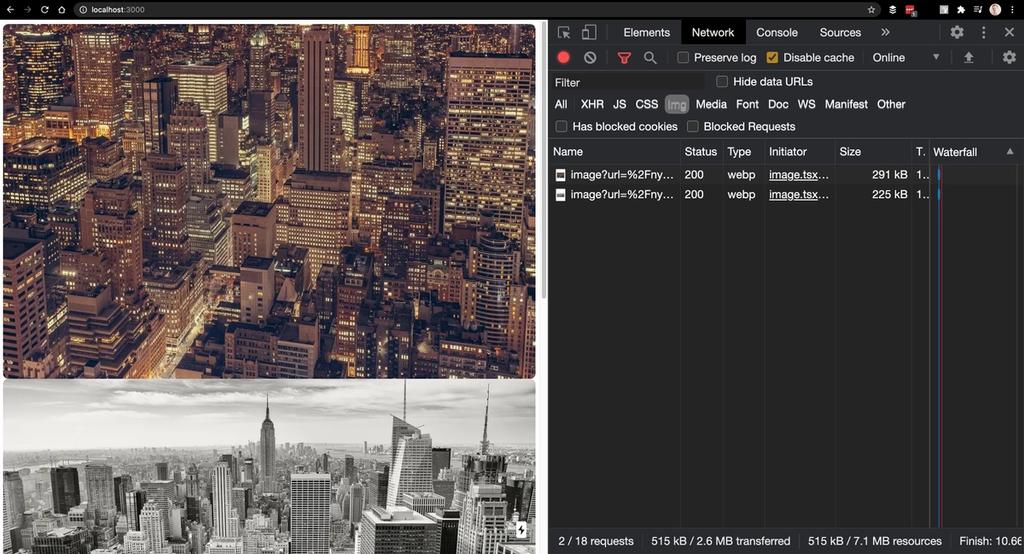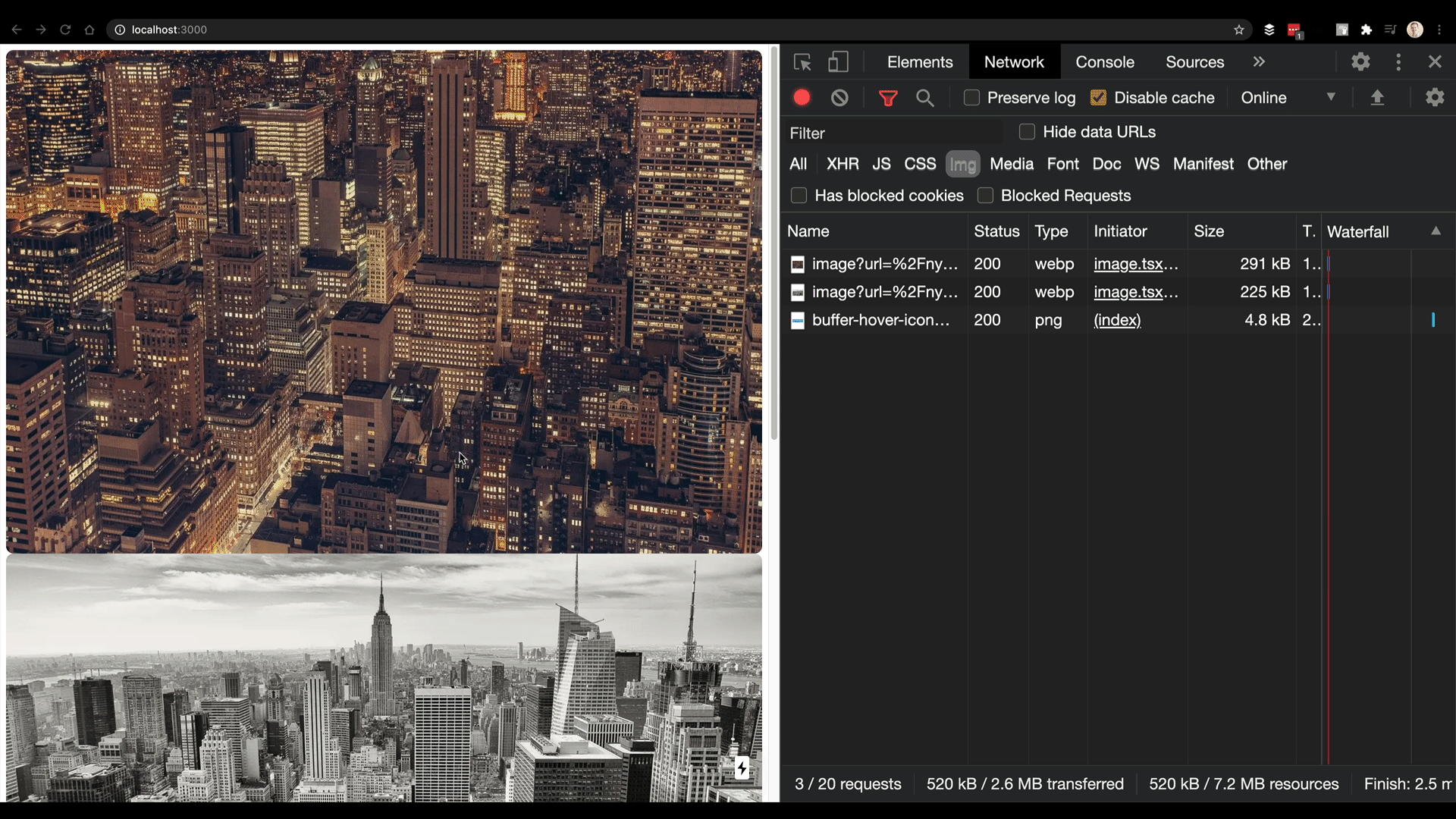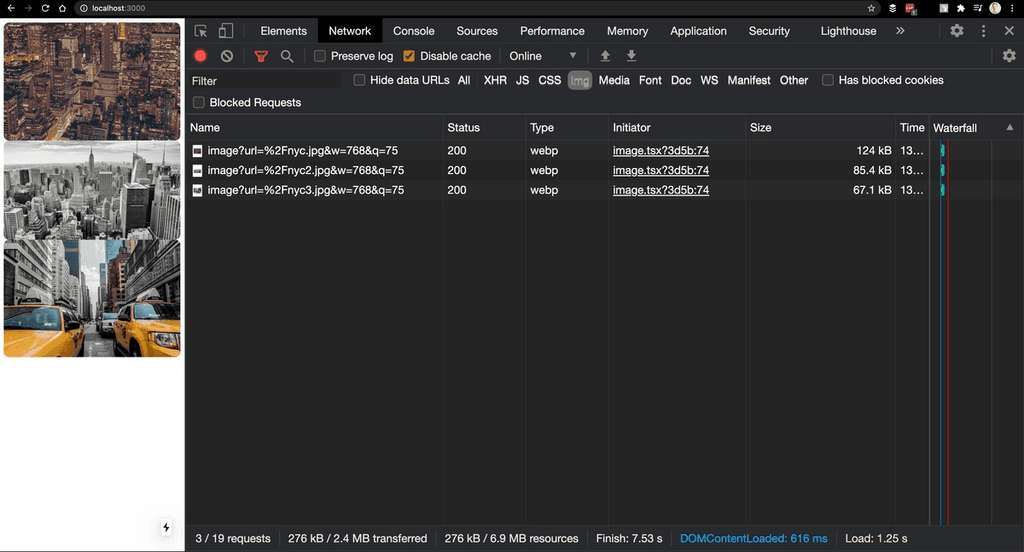Images can make or break performance on your site. With Next.js 10 and its new Image component, optimizing image performance in your sites just got a lot easier. This is a sought-after feature from developers, so let's take a look.
Starter Code
Start by creating a new Next.js project with create-next-app.
npx create-next-app image-demo
Now, replace the content inside of the index.js file with the following code that displays three images.
import Head from 'next/head';
export default function Home() {
return (
<div>
<Head>
<title>Create Next App</title>
<link rel="icon" href="/favicon.ico" />
</Head>
<main>
<div>
<img src="/nyc.jpg" alt="NYC" height={853} width={1280} />
<img src="/nyc2.jpg" alt="NYC" height={1080} width={1920} />
<img src="/nyc3.jpg" alt="NYC" height={1276} width={1920} />
</div>
</main>
</div>
);
}
You'll need to add images to your project inside of the public directory. I grabbed 3 random pictures of New York from Pixabay.
With images in place, run your project with npm run dev and open your browser to localhost:3000. Then, open the network tab in your developer tools (filter by Img requests) and reload the page.

Performance Improvements
Notice a few things in your network tab.
- each image is loaded regardless of it being visible to the user
- images sizes are large
These two things are extremely hurtful for performance. First off, there's no point in loading images that a user will never see.
Additionally, look at the image sizes.
- 447 kb
- 795 kb
- 567 kb
Those sizes are large and unnecessary. When we do load an image, we should load the appropriate sizes of an image. For example, if the user is loading the site on their phone, there's no point in loading an extremely large image.
Next.js Image Component
The new Image component in Next.js fixes all of this for us. All we need to do is import it, and use it in place of the default img tag. Replace the code in your index.js file with the following.
import Head from 'next/head';
import Image from 'next/image';
export default function Home() {
return (
<div>
<Head>
<title>Create Next App</title>
<link rel="icon" href="/favicon.ico" />
</Head>
<main>
<div>
<Image src="/nyc.jpg" alt="NYC" height={853} width={1280} />
<Image
src="/nyc2.jpg"
alt="NYC"
height={1080}
width={1920}
/>
<Image
src="/nyc3.jpg"
alt="NYC"
height={1276}
width={1920}
/>
</div>
</main>
</div>
);
}
Lazy Loading
Refresh your page and now look at the network tab again.

Notice first that only 2 of the images are being requested. Since I couldn't see the third one on the visible screen, it didn't get loaded. However, if I scroll down a bit, you'll see the new request come through.

How cool is that? The Image component is smart enough to only request the image if it's going to be visible to the user!
Optimal Image Sizes
Remember how big the original images were without the Image component. Well, now they are much smaller.
- 447 kb -> 291 kb
- 795 kb -> 225 kb
- 567 kb -> 136 kb
This is because Next.js will create multiple versions of these images that are optimal for different screen sizes. If I make my screen even smaller, you'll see the image sizes get smaller as well.

Wrap Up
Just like that, your site is much more performant. By using the Next.js Image component, you're able to take advantage of lazy loading as well as optimizations around image sizes. If you've tried it out, let me know what you think!

